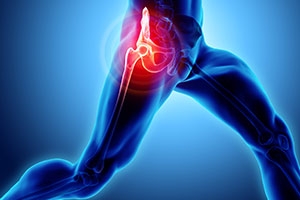The hip joint is one of the most powerful and complex structures in the human body, responsible for supporting your weight and powering your movement. But when pain or injury strikes, preserving the joint—not replacing it—is often the preferred option. Let’s explore the biomechanics of the hip, why cartilage preservation matters, and how AHI leads the way in joint-saving techniques.
Understanding the Biomechanics of the Hip Joint
The hip is a ball-and-socket joint, where the femoral head (ball) fits securely into the acetabulum (socket) of the pelvis. This design allows for a wide range of motion while bearing significant loads during everyday activities like walking, running, or climbing stairs. However, the joint must maintain proper alignment and balance to prevent uneven wear, instability, and degeneration.
When biomechanics are disrupted—through structural deformities like femoroacetabular impingement (FAI), a condition where abnormal bone shapes cause the hip bones to rub together, or labral tears, which involve damage to the cartilage ring that stabilizes the hip joint—hip function deteriorates.
The Critical Role of Cartilage Preservation
Cartilage health also impacts long-term joint function and overall mobility. Cartilage acts as the hip’s natural shock absorber, allowing for smooth and comfortable motion. Unfortunately, cartilage has a limited ability to heal once damaged. That's why preserving it is at the core of hip preservation strategies. At the American Hip Institute, we prioritize minimally invasive arthroscopic techniques that not only address the cause of pain but also preserve or restore cartilage health.
Advanced Techniques That Maintain Native Anatomy
Some of the key state-of-the-art techniques used are:
- Labral Repair and Reconstruction involves repairing or rebuilding the labrum, the cartilage ring that stabilizes the hip. Restoring its suction-seal function is crucial for maintaining joint stability and preventing further damage.
- Femoroplasty and Acetabuloplasty are procedures that reshape the femoral head or acetabulum to correct deformities caused by femoroacetabular impingement (FAI). By smoothing out bone irregularities, we reduce abnormal friction and protect the cartilage from wear.
- Capsular Management focuses on repairing or tightening the joint capsule—a key ligamentous structure that provides stability to the hip—helping to prevent joint laxity and maintain proper function.
- Cartilage Restoration may involve biologic treatments such as platelet-rich plasma (PRP), other orthobiologics, or microfracture techniques to stimulate cartilage healing and regeneration, supporting long-term joint health.
Preserve Your Hip, Preserve Your Mobility
If you're living with hip pain, don't wait until joint damage becomes irreversible. At the American Hip Institute, our mission is to preserve your joint and your active lifestyle through advanced, patient-centered care.
Schedule a consultation with the American Hip Institute today for personalized hip care for an active lifestyle.

